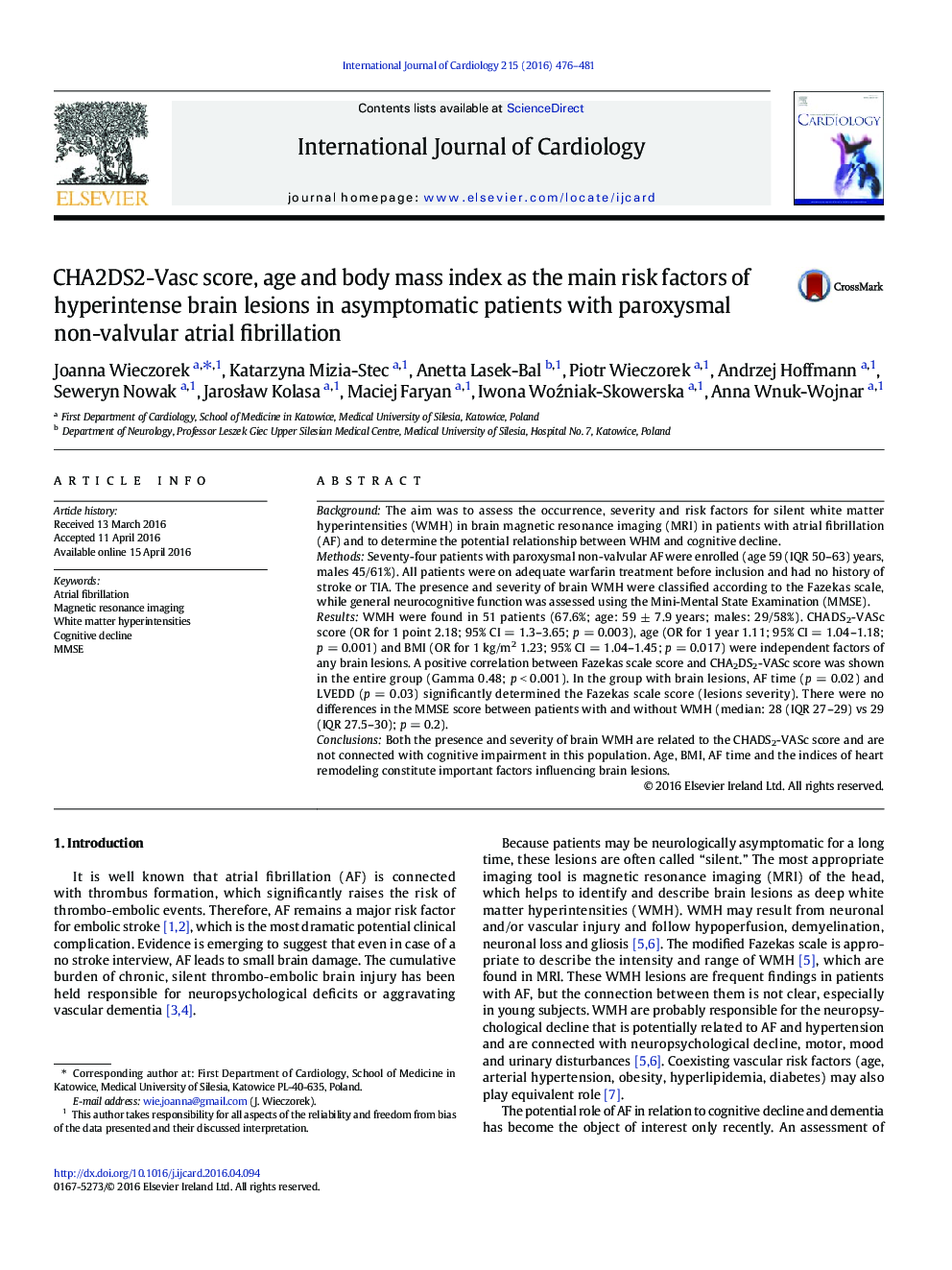| Article ID | Journal | Published Year | Pages | File Type |
|---|---|---|---|---|
| 5963987 | International Journal of Cardiology | 2016 | 6 Pages |
BackgroundThe aim was to assess the occurrence, severity and risk factors for silent white matter hyperintensities (WMH) in brain magnetic resonance imaging (MRI) in patients with atrial fibrillation (AF) and to determine the potential relationship between WHM and cognitive decline.MethodsSeventy-four patients with paroxysmal non-valvular AF were enrolled (age 59 (IQR 50-63) years, males 45/61%). All patients were on adequate warfarin treatment before inclusion and had no history of stroke or TIA. The presence and severity of brain WMH were classified according to the Fazekas scale, while general neurocognitive function was assessed using the Mini-Mental State Examination (MMSE).ResultsWMH were found in 51 patients (67.6%; age: 59 ± 7.9 years; males: 29/58%). CHADS2-VASc score (OR for 1 point 2.18; 95% CI = 1.3-3.65; p = 0.003), age (OR for 1 year 1.11; 95% CI = 1.04-1.18; p = 0.001) and BMI (OR for 1 kg/m2 1.23; 95% CI = 1.04-1.45; p = 0.017) were independent factors of any brain lesions. A positive correlation between Fazekas scale score and CHA2DS2-VASc score was shown in the entire group (Gamma 0.48; p < 0.001). In the group with brain lesions, AF time (p = 0.02) and LVEDD (p = 0.03) significantly determined the Fazekas scale score (lesions severity). There were no differences in the MMSE score between patients with and without WMH (median: 28 (IQR 27-29) vs 29 (IQR 27.5-30); p = 0.2).ConclusionsBoth the presence and severity of brain WMH are related to the CHADS2-VASc score and are not connected with cognitive impairment in this population. Age, BMI, AF time and the indices of heart remodeling constitute important factors influencing brain lesions.
